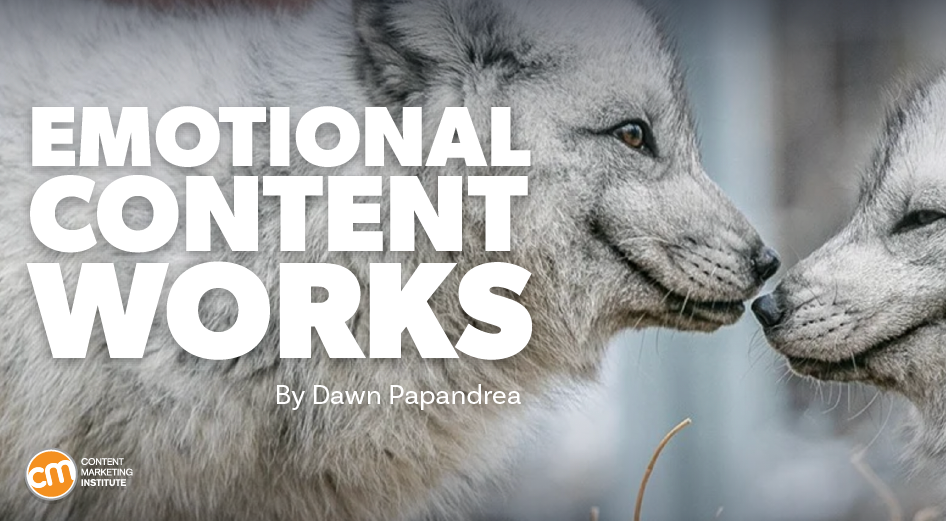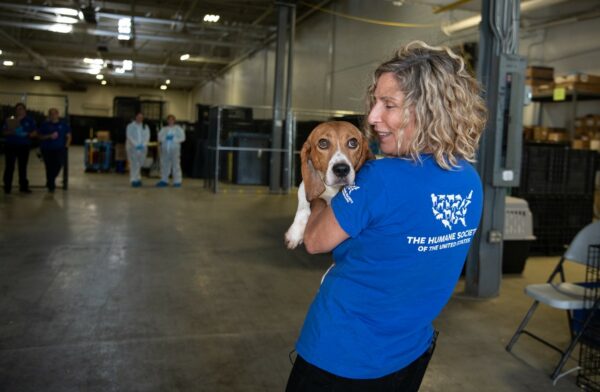MARKETING
How The Humane Society Makes Emotional Connections

Balancing the cuteness of puppies with hard-hitting advocacy to shine a light on animal suffering and inspire people to drive meaningful change takes real content expertise.
Emily Hamlin Smith, senior editorial director of the Humane Society of the United States, and her team have done that with their quarterly print magazine All Animals and other digital content. This year’s editorial coverage of the society’s rescue of nearly 4,000 beagles from a breeding facility earned a finalist nod for Best Use of Photography in the 2023 Content Marketing Awards.
And All Animals won Best Nonprofit Publication this year and in 2022, 2021, and 2020. All that award-winning work earned Emily a nod as a 2023 B2C Content Marketer of the Year finalist.
CMI spoke with Emily to learn about her content strategy, the stunning use of visuals in the magazine, and the important role print still plays in an increasingly digital world.
It starts with a unified team
In addition to the 500,000-circulation magazine, The Humane Society powers content on HumanePro.org, a hub for animal welfare groups, pet professionals such as shelter workers and veterinarians, wildlife rehabbers, etc. The editorial team also has hands on the society’s external communications, email campaigns, social media, and more.
Emily oversees five senior editors who have a specialty area. For example, one mainly handles All Animals content, while another oversees HumanePro.org. Her team also includes two dedicated writers.
“We all collaborate across things,” she explains. “The goal of that is to keep everybody engaged in all of the work, and it also helps us have a consistent tone across all of our communications because we’re all on the same page.”
Telling the animals’ story
The society sends All Animals magazine to donors who give a one-time gift of at least $25 or monthly recurring donations of at least $10. The goal is to show donors how the society puts their contributions to work through the lens of individual animals.
“I think that every animal has a story, just like every person does. They can’t tell it in their own words, so they need us to do that for them,” Emily says. “You can do it in multiple ways, either through words or visuals, and I think that when you put the two together, it can be incredibly powerful.”
Combining words and visuals lets the @HumaneSociety tell incredibly powerful stories on behalf of animals, says @Emilyrhsmith via @DawnPapandrea @CMIContent. #ContentMarketing Click To Tweet
Telling the animals’ stories can create an emotional response that triggers the viewer’s response to the call to action – to prompt readers to keep donating.
Turning pictures into more than a thousand words
The story of the beagle puppy rescue, which involved over 120 shelters and rescues in 29 states, lived on all of the Humane Society’s digital channels and the CEO’s blog. It also had immense media pickup, including coverage from The New York Times to The Washington Post.
When the print magazine went into production, Emily and the team faced a challenge – giving something new to the readers who also followed them on their digital channels. They accomplished that by visually telling the story of the entire rescue with many previously unpublished images.
“Part of that feature was a two-page spread image of the dogs being loaded into an air transport. We could really give that big picture perspective of what it took to bring this historic transportation project together,” Emily says.
They also shared the story of one animal in the rescue. “Fin was the last dog who came out of the facility in Virginia. We were able to follow up with him in his new home and kind of close the loop for the supporters who had been following us on digital channels,” Emily says.

The rescue story also involved more than the work of the society. “It was our shelter and rescue partners; it was volunteers. We wanted to give a comprehensive look at what they made possible, and our goal with that is to make the supporters feel like they were a part of it, too. Because we’re not able to do that work without their support,” she says.
The issue’s visual storytelling approach made an impression on readers who donated more than $57,000 via the magazine’s business reply envelope alone. “They let us know that the story opened their eyes to the reality of testing on dogs, something that many people aren’t aware happens in the United States,” Emily says. “It was a prime example of what can happen when you collaborate as a whole team, and everybody brings their ideas forward.”
The @HumaneSociety received over $57,000 in donations from the envelopes in one issue of its #print magazine All Animals, says @Emilyrhsmith via @DawnPapandrea @CMIContent. #ContentMarketing Click To Tweet
Making the case for print in a digital world
The shuttering of so many print magazines each year naturally weighs on the mind of a print magazine editor. But Emily says All Animals still proves its value. Leadership buys into the content tactic because they hear from donors who say the magazine resonates with them.
One donor made a $1 million bequest because of what she saw in the magazine about how the society used the contributions. “She knew that she was putting her investment and her legacy in good hands. We were all smiling ear to ear for weeks after we heard that because that’s what we want to do,” Emily says.
Still, Emily doesn’t take their success for granted. Her team ensures that every magazine issue counts by prioritizing the society’s key campaigns. They also do readership surveys regularly to gauge donors’ responses to their work. Among the findings: More than half say they’ve changed one of their eating habits because of what they’ve read. Many say they now take the time to look for cruelty-free cosmetics. And 80% say they share something they read with a friend or family member.
“When we can illustrate that to the decision-makers at the organization, it really shows our value and how the touch points that we have through the magazine extend far beyond that envelope that’s inside. That people really connect with it,” Emily explains.
Digital content is still necessary to keep different audience demographics engaged. The society will launch a digital version of All Animals this fall. Emily says, “As we see how that performs, then we’re going to start looking at how people interact with it. Can we add some more interactive features that make it a little bit more exciting and enticing than just flipping through a PDF?”
Blending advocacy, journalism, and service
Emily doesn’t believe in relying on shock value or anger to motivate people to act. “We want to be showing the reality of the situation, but also showing the donors how there’s hope and how we’re helping and how they’re helping. Some of those images are really tough – dogs in cages on farms or in a market – but we want to be sure that we’re balancing that for readers with how these dogs are getting a second chance at life,” she says.
That’s why each issue contains light-hearted, feel-good, and victory stories like the beagle rescue, along with the more challenging reports on topics like animal testing in cosmetics or the dog meat trade.
The back of the magazine gives readers service content, too. They’ve published features on how to make changes in your backyard to help protect urban wildlife, tips for caring for a pet, and advice on helping outdoor animals such as community cats.
“I want to give them a way to help, whether that’s writing a letter to their lawmaker or sending in a donation. I want to make sure that we’re inspiring people, educating people, and then giving them an action step,” Emily says.
That matches her personal content philosophy: “Tell a story, engage, educate, and then give something to do to make them a part of the solution.”
Achieving everyday content victories
Though the Humane Society editorial team has earned some amazing content wins this year, they are more motivated by the smaller wins, like one-off emails from readers or comments on a story. Emily says, “That doesn’t translate directly to dollars at that moment, but to me, providing that awareness, the inspiration, and the education is the first step to bringing them into the organization’s work. That tells me that we’re doing our job.”
MORE EXAMPLES FROM 2023 CONTENT MARKETING AWARD FINALISTS
Cover image by Joseph Kalinowski/Content Marketing Institute
















